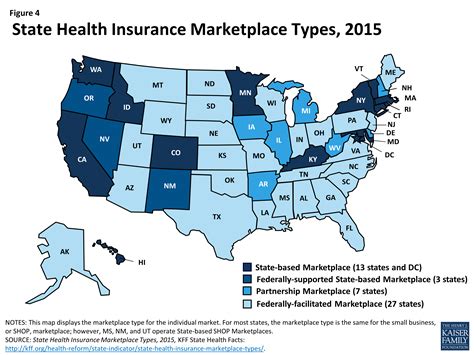Exchange Insurance

Exchange Insurance: Unlocking Financial Resilience and Peace of Mind

In the dynamic world of global commerce, the concept of Exchange Insurance stands as a pivotal safeguard for businesses and individuals alike. This specialized insurance category plays a critical role in mitigating risks associated with international trade and currency fluctuations. With the ever-evolving nature of the global economy, understanding and leveraging Exchange Insurance has become indispensable for entities engaged in cross-border transactions.
This comprehensive guide aims to delve into the intricacies of Exchange Insurance, offering an in-depth analysis of its mechanisms, benefits, and real-world applications. By unraveling the layers of this essential financial tool, we hope to empower readers with the knowledge to make informed decisions, fortify their financial strategies, and navigate the complexities of the international market with confidence.
Understanding Exchange Insurance: A Comprehensive Overview

Exchange Insurance, also known as Foreign Exchange Insurance or FX Insurance, is a specialized financial instrument designed to protect businesses and individuals from the financial risks associated with fluctuations in foreign exchange rates. It serves as a critical hedge against the volatility inherent in international transactions, where currency values can shift dramatically and unpredictably.
At its core, Exchange Insurance operates as a risk management tool, offering a contractual agreement that guarantees a predetermined exchange rate for a specified period. This rate, often referred to as the "forward rate", is fixed at the time of the agreement, regardless of future market movements. By securing this rate, entities can mitigate the uncertainty and potential losses that arise from currency fluctuations, ensuring a stable financial environment for their international dealings.
The concept of Exchange Insurance has its roots in the complex world of international finance, where the need to manage currency risk has long been a critical consideration for global players. As the world economy became increasingly interconnected, the impact of currency fluctuations on businesses and individuals became more pronounced, leading to the development of innovative risk management solutions like Exchange Insurance.
Key Features of Exchange Insurance
Exchange Insurance is characterized by several key features that make it a potent tool for risk management:
- Fixed Exchange Rates: The cornerstone of Exchange Insurance is the ability to lock in a predetermined exchange rate for a specific period. This feature provides certainty and predictability, allowing entities to plan their financial strategies without the uncertainty of fluctuating currency values.
- Risk Mitigation: By fixing exchange rates, Exchange Insurance effectively mitigates the risk of adverse currency movements. This is particularly crucial for businesses engaged in international trade, where unexpected currency fluctuations can significantly impact profitability and cash flow.
- Hedging Strategy: Exchange Insurance is often employed as a hedging strategy, providing a layer of protection against potential losses. It allows entities to insulate themselves from the downside risks of currency fluctuations, ensuring financial stability and security.
- Customizable Terms: Exchange Insurance policies can be tailored to meet the specific needs of the entity. The duration of the agreement, the amount of currency covered, and the level of risk mitigation can all be customized, ensuring a precise fit for the entity's financial strategy.
- Flexibility: Exchange Insurance offers flexibility in terms of both the currencies involved and the time frame covered. This adaptability allows entities to protect a wide range of international transactions, from short-term import/export deals to long-term investment strategies.
The Role of Exchange Insurance in Global Commerce
In the vast landscape of global commerce, Exchange Insurance plays a pivotal role in supporting the smooth functioning of international trade and financial transactions. Its impact is felt across various sectors and industries, offering a crucial layer of protection and stability in an inherently volatile market.
Protecting Importers and Exporters
For businesses engaged in international trade, Exchange Insurance is a vital tool for managing the financial risks associated with currency fluctuations. Importers, for instance, can use Exchange Insurance to secure a favorable exchange rate for the purchase of goods or services from overseas suppliers. This ensures that the cost of imports remains stable, regardless of market movements, protecting the importer's profitability and cash flow.
Similarly, exporters can leverage Exchange Insurance to lock in a favorable rate for the conversion of foreign currencies earned through sales. This hedge against currency volatility ensures that the exporter receives a consistent revenue stream, minimizing the impact of exchange rate fluctuations on their bottom line.
Supporting International Investments
Exchange Insurance is not limited to trade-related transactions. It also plays a crucial role in supporting international investments, whether in the form of direct investments in foreign entities or portfolio investments in foreign financial instruments. By fixing the exchange rate for a specified period, investors can mitigate the risk of currency fluctuations eroding the value of their investments.
For example, an investor looking to purchase shares in a foreign company can use Exchange Insurance to secure a favorable rate for the conversion of their local currency into the foreign currency. This ensures that the investment's value is not subject to the whims of the currency market, providing a stable foundation for long-term growth.
Facilitating Cross-Border Transactions
Exchange Insurance is a linchpin in facilitating the myriad of cross-border transactions that underpin the global economy. From international remittances to foreign currency loans, the stability provided by Exchange Insurance is essential for ensuring the smooth flow of capital across borders.
For instance, individuals sending remittances to their families in another country can use Exchange Insurance to lock in a favorable exchange rate, ensuring that the value of their remittances remains stable. This stability is particularly crucial for individuals who rely on regular remittances to support their families, as it provides a consistent stream of income despite currency fluctuations.
The Mechanics of Exchange Insurance: How It Works
At its core, Exchange Insurance operates through a straightforward yet powerful mechanism. By entering into a contract with an insurance provider, entities effectively purchase a guarantee that protects them from adverse currency movements. This contract, often referred to as a "forward contract" or a "currency forward", specifies the following key elements:
- Exchange Rate: The rate at which the entity will be able to exchange currencies is predetermined, ensuring stability and predictability.
- Maturity Date: The date by which the exchange of currencies will take place, marking the end of the insurance coverage period.
- Notional Amount: The agreed-upon amount of currency to be exchanged, which can be tailored to the entity's specific needs.
- Premium: The cost of the insurance coverage, which is typically a percentage of the notional amount and is paid upfront by the entity.
Upon entering into this contract, the entity gains the assurance that, regardless of future currency movements, they will be able to exchange currencies at the agreed-upon rate. This protection allows them to plan their financial strategies with confidence, knowing that their exposure to currency risk is mitigated.
The insurance provider, on the other hand, assumes the risk of adverse currency movements. If the currency appreciates in value during the coverage period, the insurance provider bears the loss, while if the currency depreciates, the provider reaps the benefit. This mechanism ensures a balanced risk-sharing arrangement between the entity and the insurance provider.
The Role of Currency Brokers
In the world of Exchange Insurance, currency brokers play a critical intermediary role. These specialized financial institutions facilitate the process of obtaining Exchange Insurance by acting as a bridge between entities seeking coverage and insurance providers. Currency brokers offer a range of services, including:
- Market Analysis: Currency brokers provide in-depth analysis of currency markets, helping entities understand the potential risks and opportunities associated with currency fluctuations.
- Risk Assessment: Brokers assist in assessing the entity's exposure to currency risk, evaluating their specific needs, and recommending appropriate insurance coverage.
- Contract Negotiation: Brokers negotiate the terms of the Exchange Insurance contract, ensuring that the coverage aligns with the entity's requirements and financial goals.
- Premium Management: Brokers manage the payment of premiums, ensuring that the entity's financial obligations are met in a timely and efficient manner.
By leveraging the expertise and services of currency brokers, entities can navigate the complex world of Exchange Insurance with greater ease and confidence. Currency brokers bring a wealth of knowledge and experience to the table, providing invaluable guidance in managing currency risk and securing the most advantageous insurance coverage.
Real-World Applications of Exchange Insurance

Exchange Insurance is a versatile tool with a wide range of applications across various industries and sectors. Its ability to mitigate currency risk makes it an indispensable asset for businesses and individuals operating in the global marketplace. Let's explore some real-world scenarios where Exchange Insurance has proven its worth.
International Trade
In the realm of international trade, Exchange Insurance is a linchpin for businesses looking to protect their profitability and cash flow. Consider the case of an export-oriented manufacturing company based in the United States. This company regularly sells its products to clients in Europe, accepting payment in euros.
Without Exchange Insurance, the company would be exposed to the risk of currency fluctuations. If the euro depreciates against the US dollar during the time between the sale and the receipt of payment, the company would incur a loss. However, by using Exchange Insurance, the company can lock in a favorable exchange rate, ensuring that the value of its sales remains stable, regardless of market movements.
Similarly, importers can use Exchange Insurance to protect themselves from currency fluctuations. For instance, a retailer importing goods from China may face the risk of the Chinese yuan appreciating against the local currency. By securing an Exchange Insurance policy, the retailer can ensure that the cost of imports remains stable, allowing for more accurate financial planning and budgeting.
International Investments
Exchange Insurance is not limited to trade-related transactions. It also plays a crucial role in supporting international investments, whether in the form of direct investments in foreign entities or portfolio investments in foreign financial instruments. Consider the case of an institutional investor looking to invest in a European real estate fund.
Without Exchange Insurance, the investor would be exposed to the risk of currency fluctuations. If the euro appreciates against the local currency during the investment period, the value of the investment would decrease in local currency terms. However, by using Exchange Insurance, the investor can lock in a favorable exchange rate, ensuring that the value of the investment remains stable, regardless of currency movements.
Cross-Border Transactions
Exchange Insurance is a linchpin in facilitating the myriad of cross-border transactions that underpin the global economy. From international remittances to foreign currency loans, the stability provided by Exchange Insurance is essential for ensuring the smooth flow of capital across borders.
For instance, consider the case of a multinational corporation with subsidiaries in various countries. This corporation may need to transfer funds between its subsidiaries to cover operational expenses or reinvest profits. By using Exchange Insurance, the corporation can lock in a favorable exchange rate, ensuring that the value of the transferred funds remains stable, regardless of currency fluctuations.
The Benefits of Exchange Insurance: Unlocking Financial Stability
Exchange Insurance is a powerful tool that offers a myriad of benefits to businesses and individuals operating in the global marketplace. By mitigating the risks associated with currency fluctuations, Exchange Insurance provides a stable financial environment, allowing entities to focus on their core operations and long-term growth strategies.
Risk Mitigation
At its core, Exchange Insurance is all about risk mitigation. By locking in a predetermined exchange rate, entities can effectively shield themselves from the volatility of currency markets. This risk mitigation is particularly crucial for businesses engaged in international trade, where currency fluctuations can have a significant impact on profitability and cash flow.
For instance, imagine a company that imports raw materials from a foreign country. If the currency of the importing country depreciates against the exporting country's currency, the cost of the imports would increase, potentially eroding the company's profit margins. However, by using Exchange Insurance, the company can fix the exchange rate, ensuring that the cost of imports remains stable, regardless of market movements.
Financial Stability
Exchange Insurance provides a critical layer of financial stability for entities operating in the global marketplace. By fixing exchange rates, entities can plan their financial strategies with confidence, knowing that their exposure to currency risk is minimized. This stability is particularly valuable for businesses with long-term investment horizons, as it allows them to make informed decisions without the uncertainty of currency fluctuations.
Consider a company that plans to expand its operations into a new market in a foreign country. The success of this expansion depends on a stable financial environment. By using Exchange Insurance, the company can secure a favorable exchange rate for a specified period, ensuring that the cost of expansion remains stable and predictable. This financial stability allows the company to focus on its growth strategy without the distraction of currency risk.
Enhanced Predictability
Exchange Insurance enhances predictability in financial planning. By fixing exchange rates, entities can accurately forecast their financial outcomes, allowing for more precise budgeting and cash flow management. This predictability is essential for businesses looking to optimize their financial performance and make informed strategic decisions.
For example, a multinational corporation with subsidiaries in various countries may need to transfer funds between its subsidiaries to cover operational expenses. Without Exchange Insurance, the corporation would be exposed to currency fluctuations, making it difficult to accurately predict the value of these transfers. However, by using Exchange Insurance, the corporation can lock in a favorable exchange rate, ensuring that the value of the transfers remains stable and predictable.
Improved Cash Flow Management
Exchange Insurance can significantly improve cash flow management for businesses. By fixing exchange rates, businesses can accurately forecast their revenue and expenses, allowing for more efficient cash flow planning. This improved cash flow management can lead to better financial performance and a more stable financial position.
Consider a retailer that imports goods from a foreign country and sells them locally. The retailer's revenue is denominated in the local currency, while its costs, including the cost of imports, are denominated in the foreign currency. Without Exchange Insurance, the retailer would be exposed to currency fluctuations, making it difficult to accurately predict its cash flow. However, by using Exchange Insurance, the retailer can fix the exchange rate, ensuring that its revenue and costs remain stable, leading to improved cash flow management.
Future Implications and Innovations in Exchange Insurance
As the global economy continues to evolve, the role of Exchange Insurance is likely to become even more pivotal. With increasing globalization and the rising complexity of international transactions, the need for effective currency risk management will only grow. Here, we explore some of the future implications and potential innovations in Exchange Insurance.
Expanding Market Reach
One of the key future implications of Exchange Insurance is its expanding market reach. As more businesses and individuals recognize the importance of currency risk management, the demand for Exchange Insurance is likely to increase. This expansion will drive the development of new products and services tailored to the specific needs of different industries and sectors.
For instance, we may see the emergence of Exchange Insurance products designed specifically for small and medium-sized enterprises (SMEs) that are increasingly engaged in international trade. These products would be tailored to the unique financial constraints and risk profiles of SMEs, offering affordable and accessible currency risk management solutions.
Technological Innovations
The rapid advancement of technology is likely to have a significant impact on Exchange Insurance. Digital platforms and blockchain technology, in particular, have the potential to revolutionize the way Exchange Insurance is delivered and accessed.
Digital platforms can enhance the efficiency and accessibility of Exchange Insurance by providing a seamless and user-friendly interface for policyholders. These platforms can offer real-time currency market data, advanced risk assessment tools, and a streamlined process for purchasing and managing Exchange Insurance policies. This digital transformation can make Exchange Insurance more accessible and appealing to a wider range of entities.
Blockchain technology, with its ability to provide secure and transparent transactions, can further enhance the credibility and trustworthiness of Exchange Insurance. Smart contracts, which are self-executing contracts with the terms of the agreement directly written into code, can be used to automate the process of Exchange Insurance, reducing the risk of errors and fraud.
Personalized Risk Management
The future of Exchange Insurance may also see a shift towards more personalized risk management solutions. With the increasing availability of data and advanced analytics, insurance providers will be able to offer tailored policies that address the specific needs and risk profiles of individual entities.
By leveraging data analytics, insurance providers can gain a deeper understanding of the currency risk exposure of their clients. This data-driven approach can lead to the development of customized Exchange Insurance products that are finely tuned to the unique financial circumstances and goals of each entity. This level of personalization can enhance the effectiveness of Exchange Insurance, ensuring that it provides the most appropriate protection for each client.
Sustainable and Ethical Practices
As sustainability and ethical considerations become increasingly important in the business world, the future of Exchange Insurance may also see a focus on these aspects. Insurance providers may explore ways to align Exchange Insurance with sustainable and responsible investment practices, ensuring that the financial protection provided contributes to a more sustainable and equitable global economy.
For instance, Exchange Insurance policies could be designed to incentivize entities to engage in sustainable practices, such as reducing their carbon footprint or promoting ethical sourcing.



